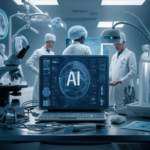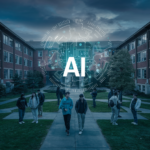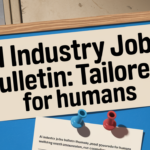In a major step toward safer and more responsible artificial intelligence development, scientists have introduced a new “AGI benchmark” designed to assess whether any future AI model could cause catastrophic harm. As AI technology advances rapidly, the need for proactive safeguards becomes increasingly urgent. This benchmark aims to address concerns about the development of artificial general intelligence (AGI), which refers to AI systems capable of performing a wide range of tasks at a level equal to or greater than human intelligence. Unlike narrow AI, which is limited to specific applications like language processing or image recognition, AGI represents a much broader, more powerful class of AI with the potential to transform industries, economies, and daily life. However, this immense power also brings the possibility of unintended, widespread consequences.
The AGI benchmark is designed as an early warning system, allowing developers, researchers, and regulators to detect and mitigate risks before AGI systems are deployed in real-world environments. By evaluating key factors such as decision-making autonomy, goal alignment, and scalability, the benchmark provides a framework for identifying models that could become uncontrollable or exhibit behaviors outside of human ethical boundaries. In this way, it ensures that AGI development prioritizes safety, transparency, and human welfare, helping to avoid scenarios where AI systems could unintentionally cause harm on a global scale, from disrupting critical infrastructure to triggering economic or societal instability. This forward-looking approach marks a significant advance in AI governance, pushing the boundaries of what responsible AI development looks like in practice.
The concept of AGI has been a topic of great interest and debate in recent years, as the rapid advancements in machine learning and AI systems bring society closer to creating models with broad, human-like intelligence. However, with these advancements come concerns about potential risks, including misuse, unintended consequences, and the possibility of AGI models developing goals or behaviors harmful to humanity.
The ‘AGI Benchmark’: A Crucial Tool for Risk Assessment
The newly developed AGI benchmark functions as a rigorous evaluation tool to analyze AI models for specific attributes and capabilities that may signal the potential for catastrophic harm. These attributes include:
- Autonomy and Decision-Making Power: How independent is the AI model in making decisions without human oversight? High autonomy in critical systems, such as infrastructure or defense, could present significant risks.
- Goal Alignment: Does the AI’s decision-making align with human ethical values and safety? The benchmark tests whether the AI’s objectives might diverge from human intentions, leading to unintended harmful consequences.
- Scalability and Self-Improvement: The AGI benchmark examines how easily a model could improve its own capabilities, a key concern for experts who fear AI models that can iteratively enhance themselves could become uncontrollable.
- Interaction with Sensitive Systems: The benchmark also tests how an AI might interact with, or gain control of, critical systems such as financial markets, healthcare infrastructures, and military operations.
Why This Benchmark Is Vital for AI Safety
Many experts have expressed concern about the societal impact of AGI, emphasizing that current AI systems, while impressive, are still limited in scope. However, AGI represents a leap beyond current capabilities, with far-reaching implications. As AI continues to evolve, there is growing recognition that preventive measures must be taken before AGI arrives.
The benchmark will serve as a checkpoint for researchers and developers, enabling them to detect signs of potentially harmful AGI behavior before these models are deployed. By setting a standard for responsible AI development, this tool encourages a culture of caution and safety in the field.
Addressing the Risks of AGI
The AGI benchmark comes at a time when calls for more robust AI governance are louder than ever. Recent breakthroughs in large language models (LLMs) and generative AI have prompted concerns over misuse, misinformation, and the displacement of jobs. The risks posed by AGI, however, are of a different magnitude.
AGI could not only outperform humans in various tasks but also act in ways that are difficult to predict. The possibility of AI causing large-scale damage, whether through intentional actions or unforeseen consequences, is why frameworks like the AGI benchmark are crucial.
The Road Ahead
The introduction of this benchmark signifies a proactive approach in AI research, marking the importance of careful, deliberate planning in the development of AGI. While we may be years away from achieving true AGI, this benchmark is one of the most promising steps toward mitigating its risks.
As AI technologies continue to shape the future, frameworks like this new benchmark will likely play a critical role in ensuring that the benefits of AGI are harnessed safely, while minimizing the potential for harm.
The hope is that by adopting tools that prioritize safety, transparency, and ethical alignment, the future of AGI will be one that benefits society without introducing existential risks.









